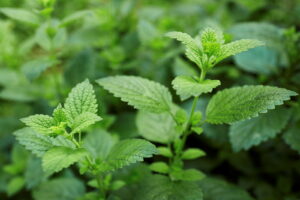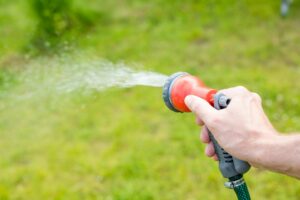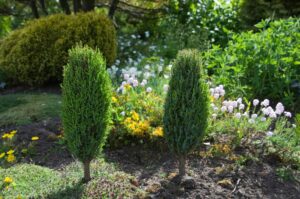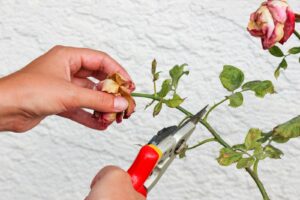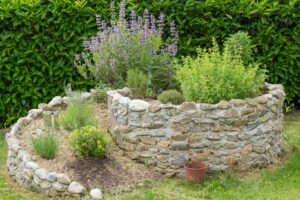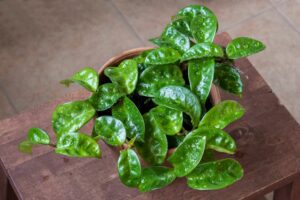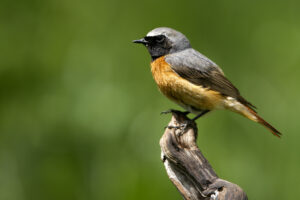Planting lemongrass: location, sowing and more
Exotic lemongrass enjoys great popularity both as an ornamental and as a useful plant. With the right knowledge about the location and the appropriate pre-culture, nothing stands in the way of planting the sweet grass.
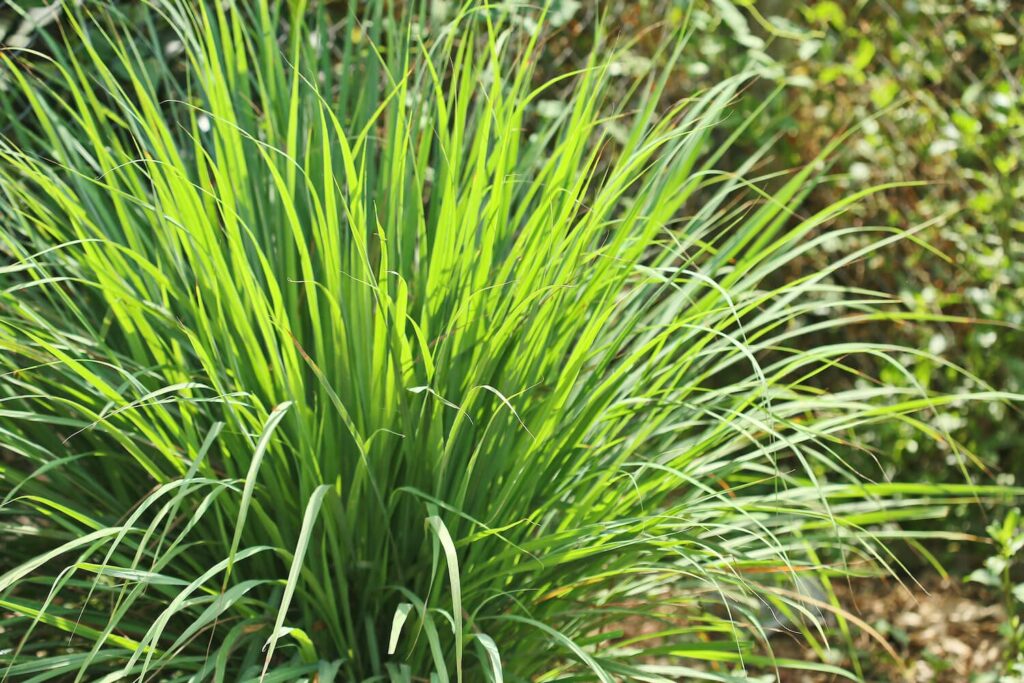
The original homeland of lemongrass (Cymbopogon spec.) is still unknown, but it is believed that the plant, which belongs to the sweet grass family (Poaceae), originated in southern India or Sri Lanka. What is unanimous, however, is its tropical and subtropical origin, which must be taken into account in the site conditions to ensure healthy growth. This makes the cultivation of the frost-sensitive plant in our latitudes difficult. Here you will find tips on how to grow, harvest and use the lemon-scented and lemon-tasting grass in your garden.
Contents
Tip: Two types of lemongrasses can be grown: West Indian lemongrass (Cymbopogon citratus) and East Indian lemongrass (Cymbopogon flexuosus). The species are very similar, but there are subtle differences in appearance as well as in smell and taste.
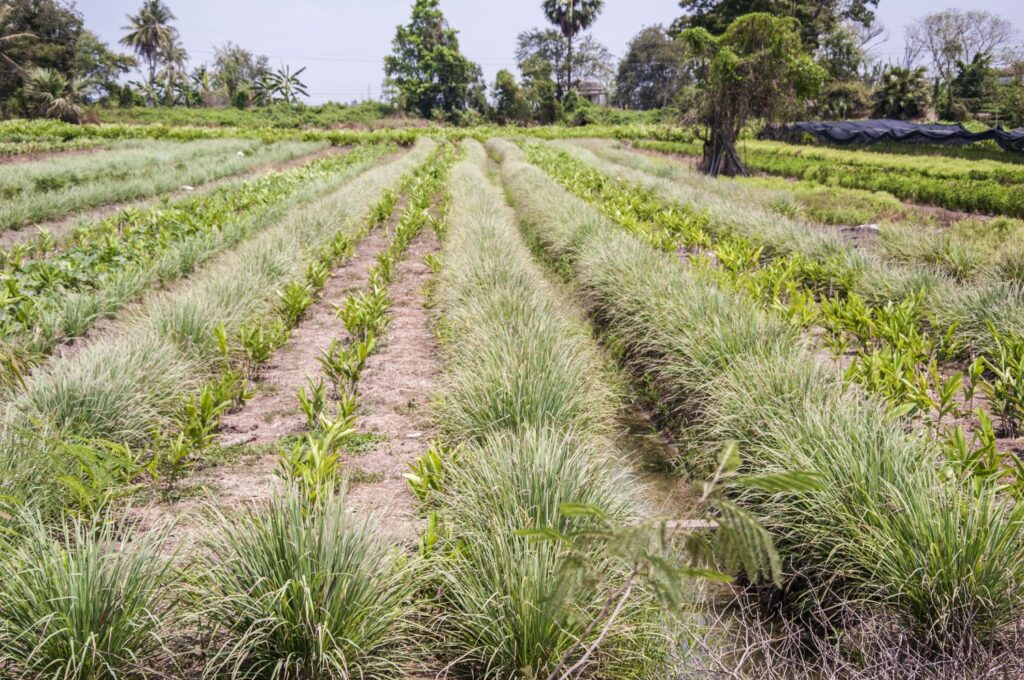
Planting lemongrass: the right location
Lemongrass has relatively high requirements on its location. Except for warm vineyards, outdoor cultivation is almost impossible, and lemongrass is thus better cultivated in pots. Protected overwintering is essential, as it can only tolerate frosts down to around – 10 °C. In general, the location should always be protected from the wind, warm and preferably bright, with plenty of sun. Due to its sensitivity to frost, lemongrass must be overwintered indoors. However, the plant tolerates dry air without problems, which makes wintering indoors much easier.
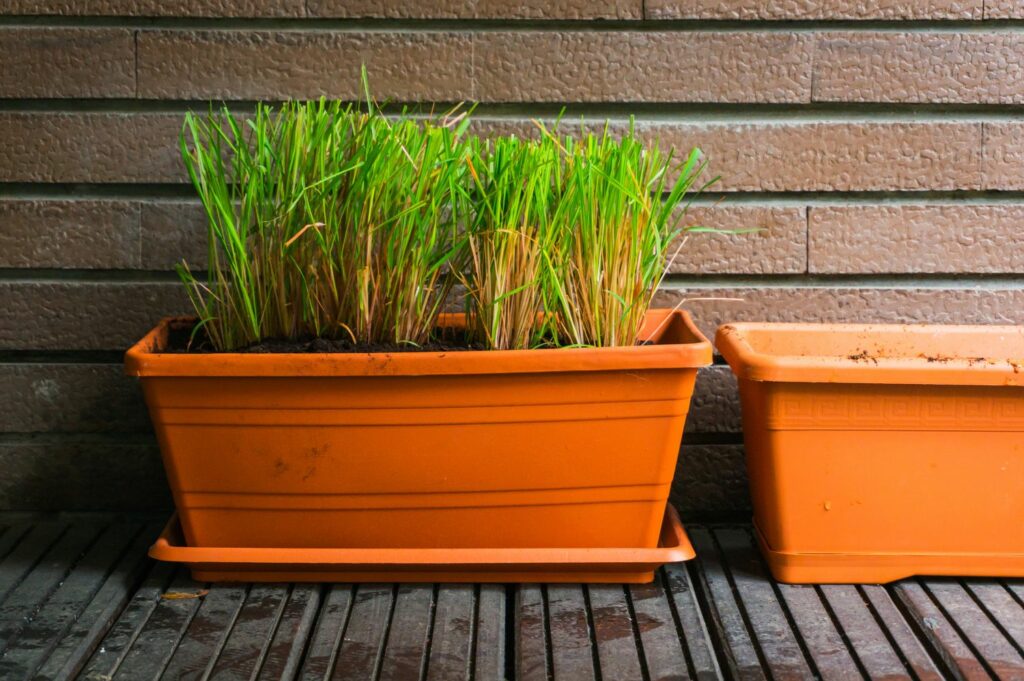
Outdoors, the ideal place for lemongrass is a plant bed along the wall of the house, while sheltered corners on the balcony or terrace are good for potted plants. Indoors, a south-facing windowsill should be chosen where the lemongrass gets enough sun. Lemongrass has a moderate nutrient requirement, which is why the soil, or the planting soil should be rich in nutrients and humus. although it reacts sensitively to sudden, high nutrient additions. Lemongrass also needs a deep and well-drained soil with constant water availability, but without waterlogging. A drainage layer should therefore be included in any case.
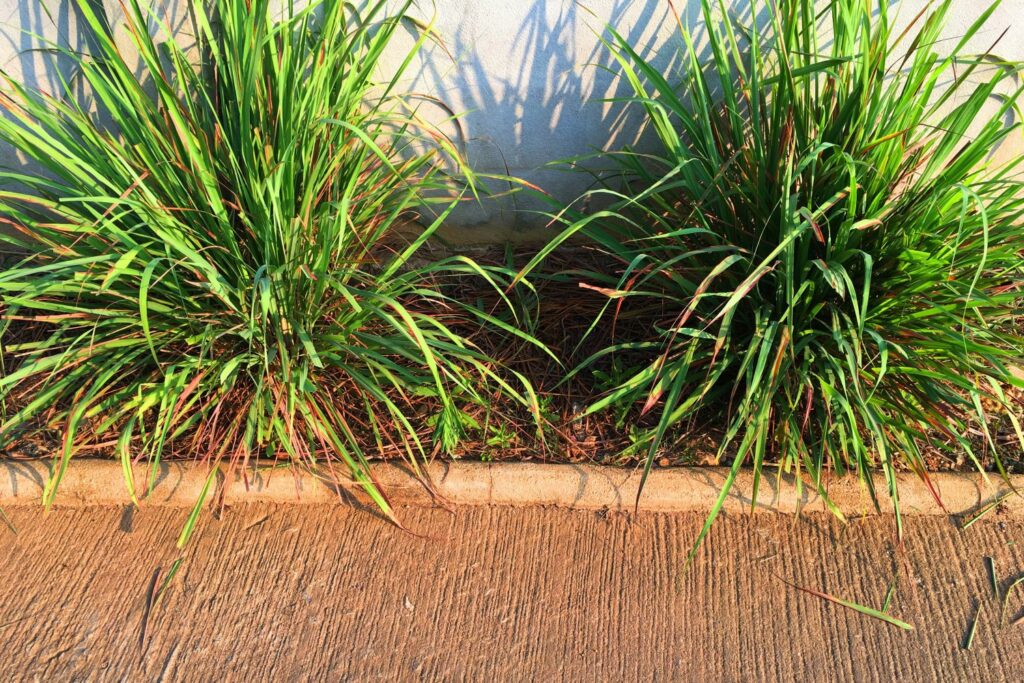
Planting lemongrass in a pot or tub: For pot culture – whether on the windowsill, balcony or terrace – you can use a nutrient-rich soil that meets the nutrient needs of lemongrass. As a basis for this, for example, our Plantura Organic Enriched Compost is suitable, which thanks to its high humus content is able to provide the lemongrass with all the important nutrients in the long term. Add at least 1/3 sand to provide good drainage, creating optimal growing conditions for this exotic sweet grass.

- Perfect for all crops and ornamental plants with a high nutrient requirement & for raised beds
- Improves soil quality & promotes healthy root growth
- Peat-free & organic soil: CO2-saving composition
How to grow lemongrass
Lemongrass can be grown in two ways: Either purchased stems – so-called bulbs, that is, propagation bulbs – are rooted and then planted out. Alternatively, Cymbopogon flexuosus can be grown from seed. Cymbopogon citratus is not or rarely found as seed because the species forms seeds very sparsely. Once the lemongrass has grown, it can be moved outdoors as soon as the temperatures are permanently above 7 °C. It does not tolerate lower temperatures.
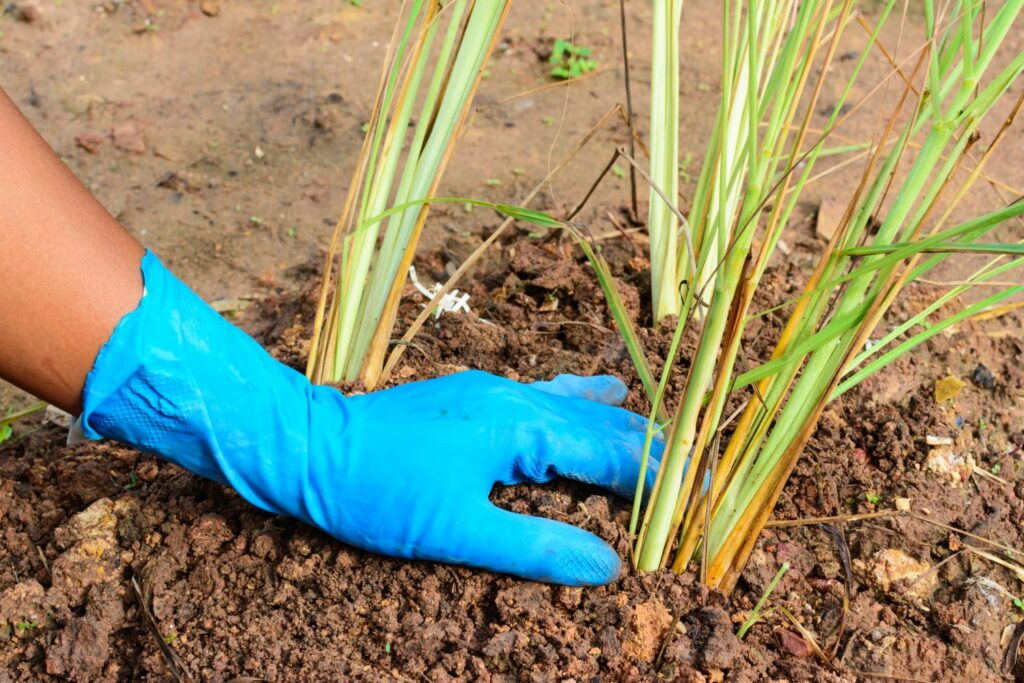
Sowing lemongrass
You can start sowing Cymbopogon flexuosus between February and March. To do this, fill a seed tray with a suitable soil and tap it open to let the substrate settle a little. Be sure to use a special, nutrient-reduced growing medium, as this will encourage the initial root growth of the seedlings and allow vital plants to develop. For this purpose, for example, our Plantura Organic Herb & Seedling Compost is suitable, which thanks to its loose structure allows easy rooting and avoids the formation of waterlogging and consequent mould. In addition, our earth is made of purely natural raw materials, which is kind to the environment during production and saves carbon dioxide.

- Perfect for herbs as well as sowing, propagating & transplanting
- For aromatic herbs & healthy seedlings with strong roots
- Peat-free & organic soil: CO2-saving composition
Seeds should be spread on the soil and only pressed. Then water them thoroughly – but avoid soaking the soil. Subsequently, the seeding container can be covered with a transparent film, with a few holes pierced into it. In a bright place, such as a windowsill, the seeds germinate at about 15 to 25 °C after three to four weeks. The film should be removed for a few hours at least every two days to prevent mould growth. Similarly, it is important to keep the soil moist, but not too wet, during germination. Once the seeds have germinated successfully and formed seedlings, they can be moved outdoors from mid-May.
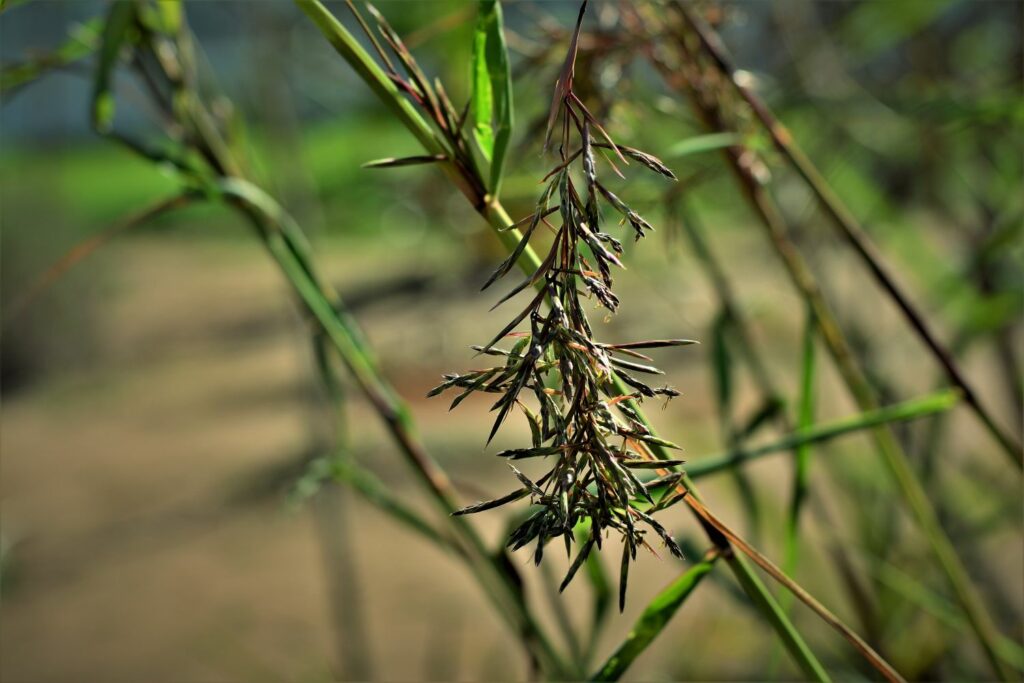
At a glance: Growing lemongrass yourself
- Fill a growing container with suitable growing soil and tap to set the soil
- Spread the lemongrass seeds loosely on the soil and press down
- Water thoroughly with a fine spray
- Cover with a sheet of film and place in a bright place at 20 – 25 °C
- Ventilate regularly to prevent mould growth
Rooting lemongrass: very simple in a jar of water
Alternatively, growing from seed, fresh, purchased bulbs can be rooted and then planted. To do this, fill a normal water glass about 3 to 5 cm high with tap water. Now place a few stalks of lemongrass in the glass with the stalk base down so that the lowest part of the bulbs is in the water. Placed in a bright place, the cut stalks begin to form a new root system after about one to two weeks. During this time, it is important to change the water regularly. Once the fine roots have reached a length of 2 to 3 cm, the lemongrass can be planted in a pot with fresh soil.
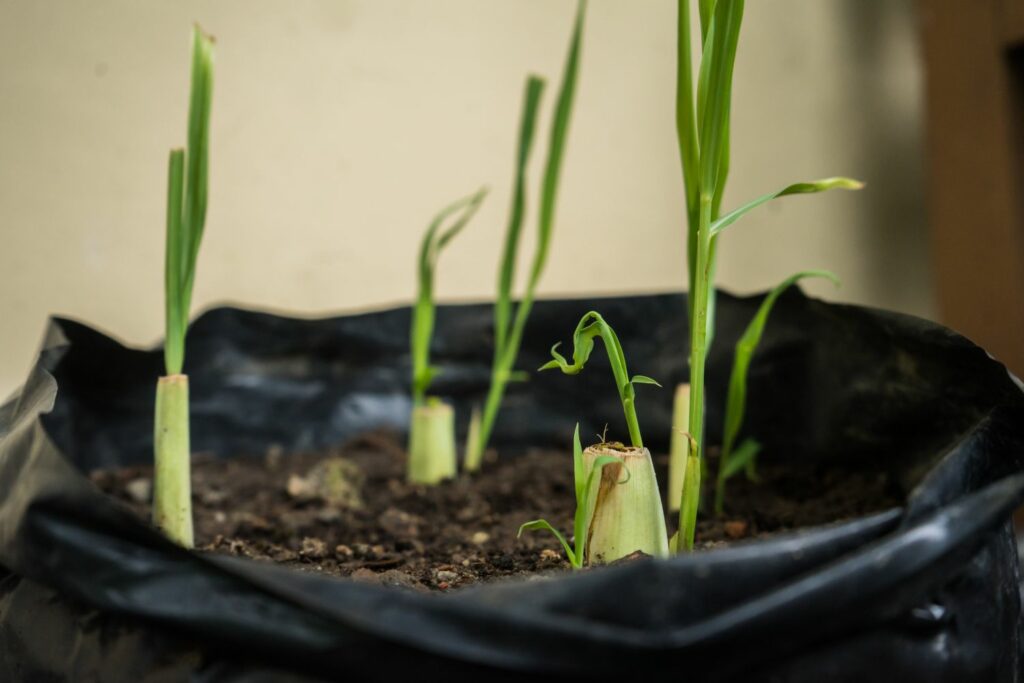
Planting lemongrass
Successfully grown or overwintered lemongrass can be planted in a larger pot in the spring and placed outdoors as soon as temperatures are consistently above 8 °C. Lemongrass does not tolerate cold temperatures, so you should in any case wait until any danger of frost has passed, in mid-May. Dig a hole for planting that is large enough for the root ball and place your lemongrass in it. The hole is then refilled with a mixture of two-thirds soil and one-third sand. Again, because of the high nutrient requirements of lemongrass, we recommend a high-quality, nutrient-rich soil such as our Plantura Organic Enriched Compost.
When repotting in a larger container, such a substrate should also be used. When repotting, the new pot should be about 3 to 4 cm larger than the old one. A drainage layer of expanded clay or coarse gravel at the bottom of the pot prevents water from accumulating. In autumn, once the temperature is permanently below 10 °C, planted lemongrass should be taken out of the bed and, like potted plants, moved to mild winter quarters.
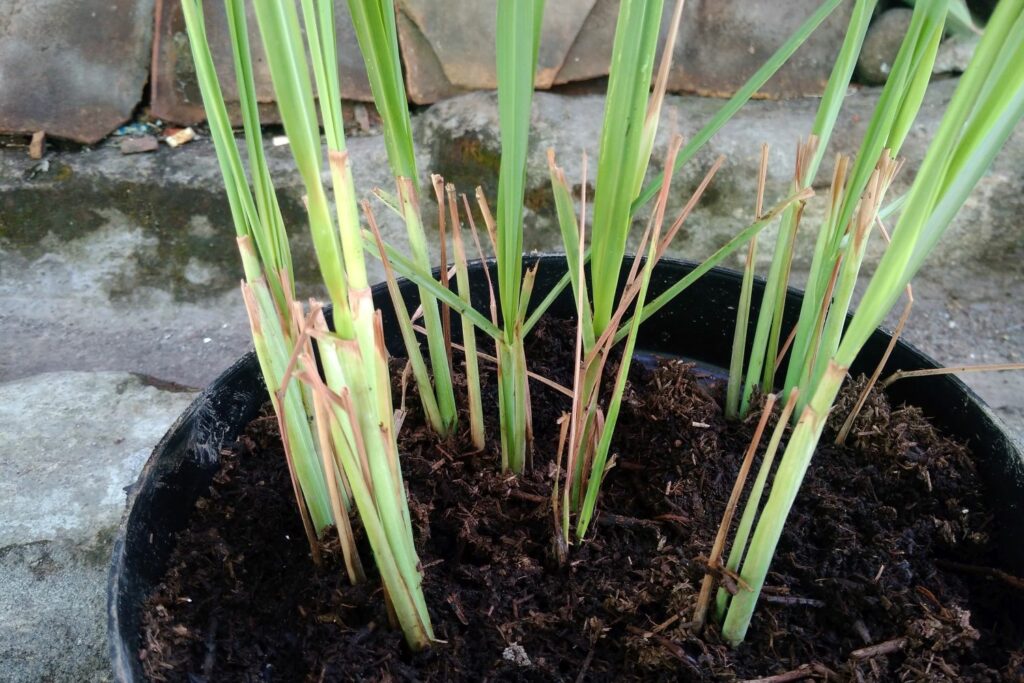
Have you successfully propagated the lemongrass and planted in the spring? Then you can start harvesting the fresh lemongrass after just a few weeks.


